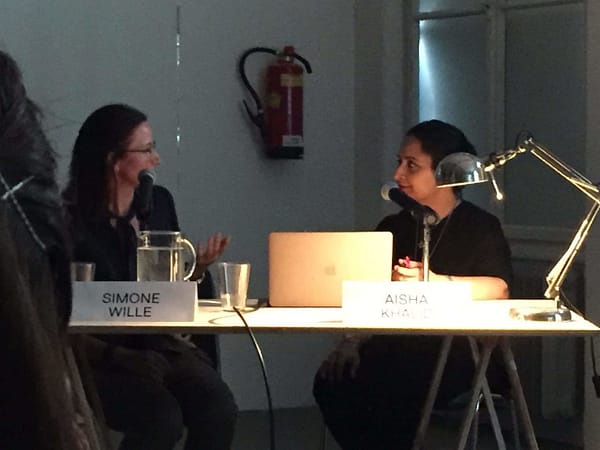Straddling old and new.
Using the ancient technique of miniature paintings, Aisha Khalid, one of the most famous artists in Pakistan, developed a unique style of contemporary art, which straddles the old and the new. It nearly always includes the minuscule brush strokes and geometrical patterns which are typical for this traditional technique. However, her goal is not just to preserve the old but to integrate it into contemporary art.

Khalid started learning the miniature painting technique in 1999 under a very conservative teacher in Lahore, Pakistan. Her first year as a student of miniature painting consisted mainly of learning to draw lines. Two further years taught her the basic skills of miniature painting. Born and raised in Faisalabad, third-largest city of Pakistan, 150 km West of Lahore, she was intrigued by this ancient tradition which is practiced sitting on the floor. She also brought with her a love and fascination for flowers and fabrics.
Miniature painting is part of the book painting category. Her Pakistani teacher was a traditionalist and provided her with a very rigorous training of skills with no room for experimentation. As a result, she soon realized as a student that her task was not to keep alive the tradition.
In 2001 she went to Amsterdam on a scholarship but had to leave for 3 months when 9/11 happened (in 2002) because it became unsafe for her.
Between the fronts
Being the first student (or one of the first students) from Pakistan, she encountered a lot of misconceptions about her country and culture. During her first stay at Amsterdam, even her artist colleagues did not understand the significance of the veil in her paintings.
Her artist colleagues in Amsterdam thought that said she was too traditional.
Her mentor in Lahore thought that she is destroying the tradition.
This changed when she returned after 9/11. After 9/11 people in the Netherlands were more familiar with Pakistani. As a result, her artist colleagues better understood the role of veils in Pakistan and therefore in her art.
Aisha Khalid’s art has always been a balancing act, of honoring the tradition on the one hand and still transform it into contemporary art.
Straddling old and new and integrating them with each other
When participating in the Lahor Biennale 2018, Aisha Khalid was excited to work in her own city. She chose the Royal Bath of Mughal Empires “Wazir Khan Hammam” as her site for the installation. One part of her contribution was situated in its huge dome which is reflected in a mirror underneath.

She also used the damaged frescos of the site as part of her installation but was disappointed that she was not allowed to paint on the already destroyed frescos. Eventually, she used photographs of them and painted in the spaces between. These spaces she filled with her typical precise geometrical patterns of miniature art.
Why am I not allowed to paint over the already destroyed frescos? They are no longer in their original condition and have been transformed several times over.
Khalid compared it to the situation in Italy where people go to the traditional school to learn about renovating frescos, while those interested in contemporary art attend a different school. But they would never think of integrating the two into each other. She would challenge us to combine the traditional techniques such as fresco and integrate them with the modern and contemporary art. This is basically what she did with the miniature painting technique. This way of straddling old and new has become her trademark.
Summeracademy
Presently, she is teaching this technique to students at the Salzburg International Summeracademy of Fine Arts, Austria. What she learned in three years of rigorous training, she is now trying to condense and pass on in a two-week course at the Festung Hohesalzburg.
(Excerpt of an art talk in Salzburg, organized by the Salzburg International Summeracademy of Fine Arts, moderated by Simone Wille, international art historian specialized in the modern and contemporary art of Pakistan.)
Part of the series for the workshop “Art in the blog“

